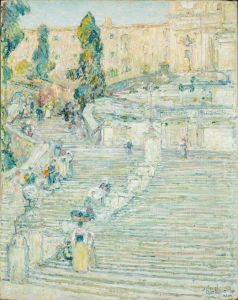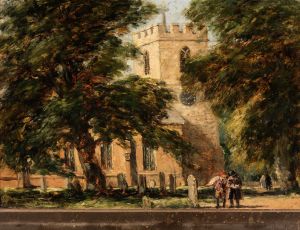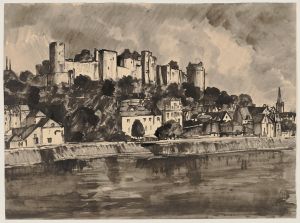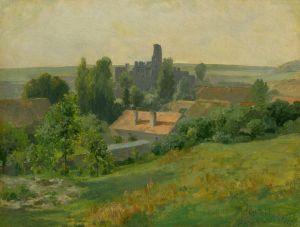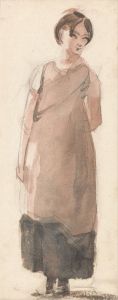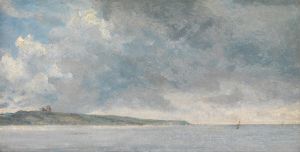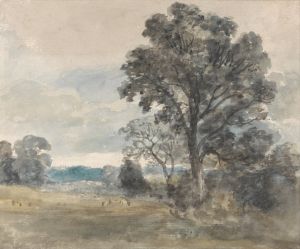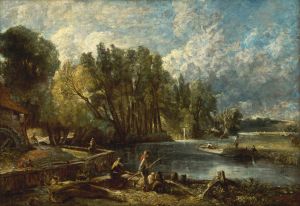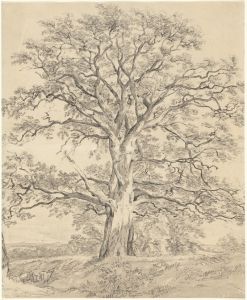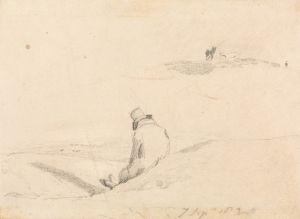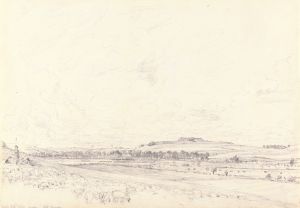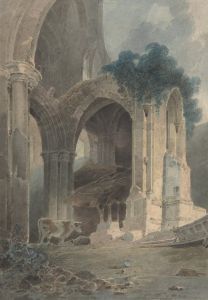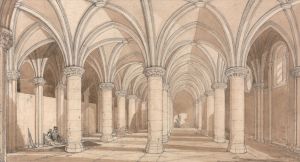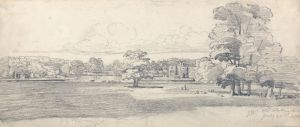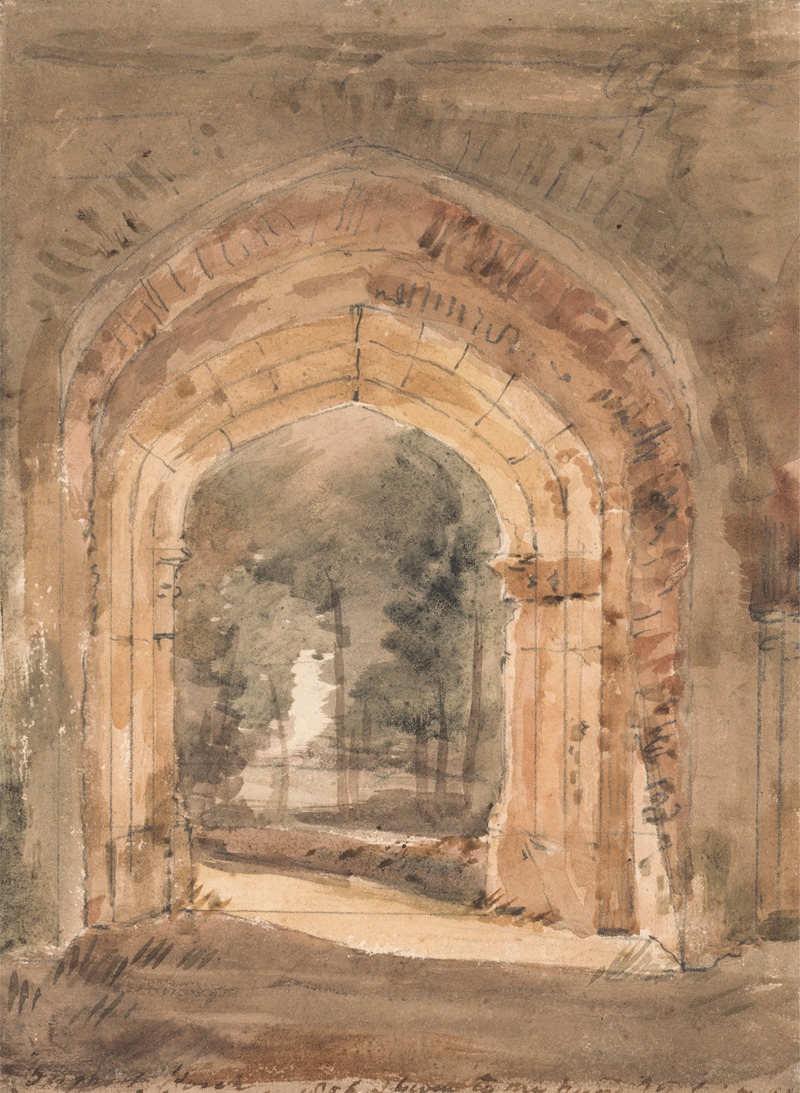
East Bergholt Church, Looking Out the South Archway of the Ruined Tower
A hand-painted replica of John Constable’s masterpiece East Bergholt Church, Looking Out the South Archway of the Ruined Tower, meticulously crafted by professional artists to capture the true essence of the original. Each piece is created with museum-quality canvas and rare mineral pigments, carefully painted by experienced artists with delicate brushstrokes and rich, layered colors to perfectly recreate the texture of the original artwork. Unlike machine-printed reproductions, this hand-painted version brings the painting to life, infused with the artist’s emotions and skill in every stroke. Whether for personal collection or home decoration, it instantly elevates the artistic atmosphere of any space.
"East Bergholt Church, Looking Out the South Archway of the Ruined Tower" is a painting by the renowned English Romantic painter John Constable. Constable, born in 1776 in East Bergholt, Suffolk, is celebrated for his landscape paintings that capture the natural beauty of the English countryside. This particular work is one of his many paintings that reflect his deep connection to his birthplace and its surroundings.
The painting depicts a view from the south archway of the ruined tower of St. Mary's Church in East Bergholt. This church holds personal significance for Constable, as it is located in his hometown. The church itself is a notable historical structure, with parts dating back to the medieval period. However, the tower was never completed, which left it in a state of ruin that Constable found artistically inspiring.
In this work, Constable employs his characteristic style, focusing on the interplay of light and shadow and the detailed rendering of natural elements. The view through the archway frames the landscape beyond, creating a sense of depth and inviting the viewer to gaze into the distance. This technique is typical of Constable's work, where he often used architectural elements to frame his landscapes, adding layers of interest and complexity to the composition.
Constable's use of color and light in this painting is particularly noteworthy. He captures the subtle variations in the natural light, which plays across the stone of the archway and the foliage beyond. This attention to the effects of light is a hallmark of Constable's work and contributes to the atmospheric quality of his landscapes. His ability to convey the transient effects of weather and light was revolutionary at the time and influenced many later artists.
The painting is also an example of Constable's dedication to painting en plein air, or outdoors, which was relatively uncommon at the time. This approach allowed him to observe and capture the changing conditions of the natural world directly, lending his work an immediacy and authenticity that was highly regarded by his contemporaries and remains influential today.
"East Bergholt Church, Looking Out the South Archway of the Ruined Tower" is a testament to Constable's skill in capturing the essence of the English countryside and his ability to infuse his landscapes with emotion and a sense of place. The painting not only reflects his technical prowess but also his deep personal connection to the landscapes he painted, particularly those of his beloved Suffolk.
Constable's works, including this painting, are housed in various collections around the world, and they continue to be studied and admired for their contribution to the Romantic movement and their enduring beauty. His legacy as one of England's greatest landscape painters is firmly established, with this painting serving as a fine example of his artistic vision and mastery.





